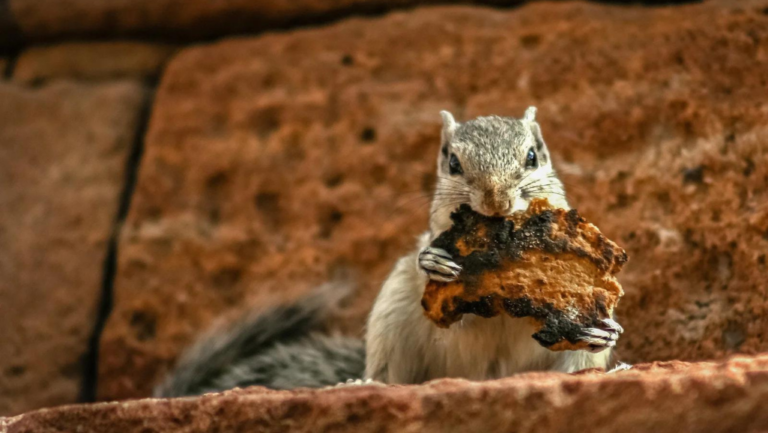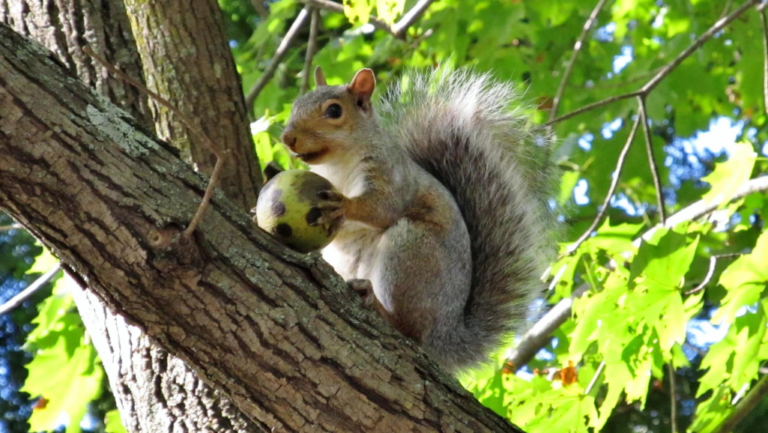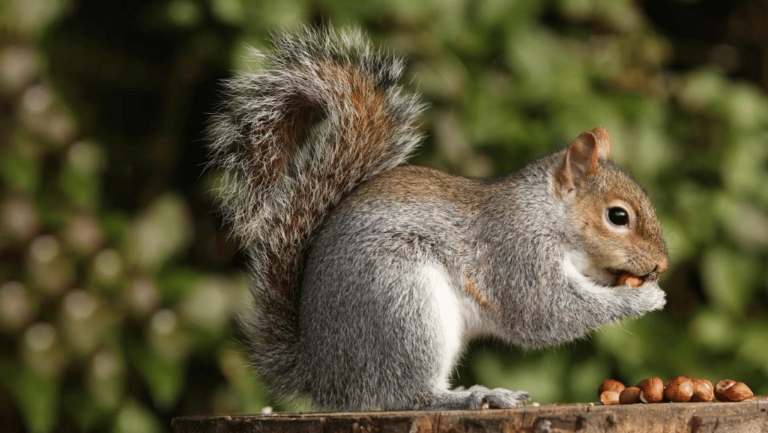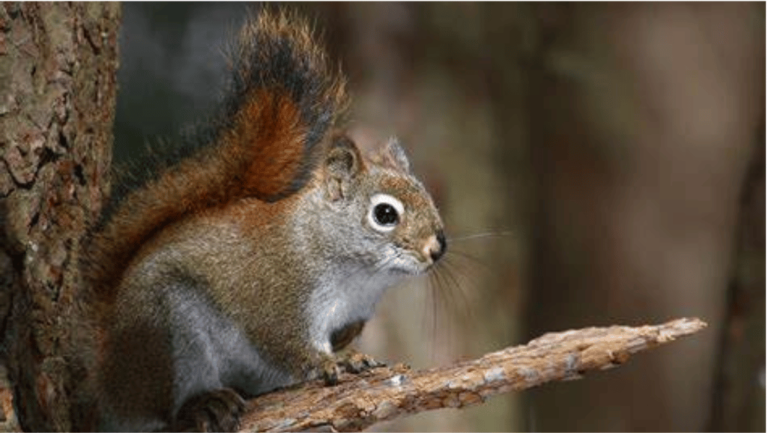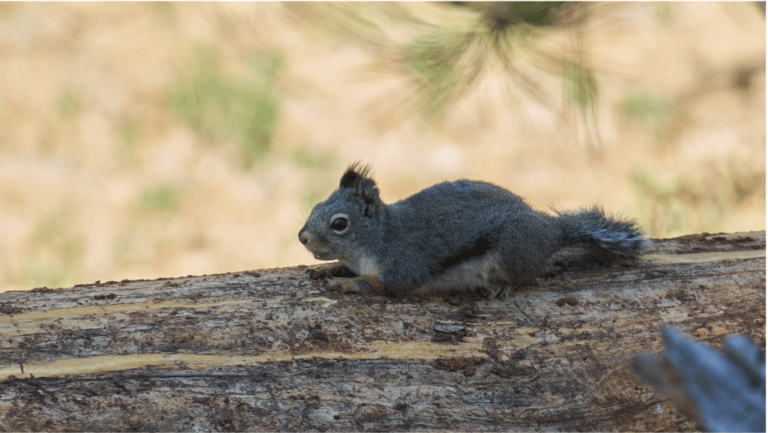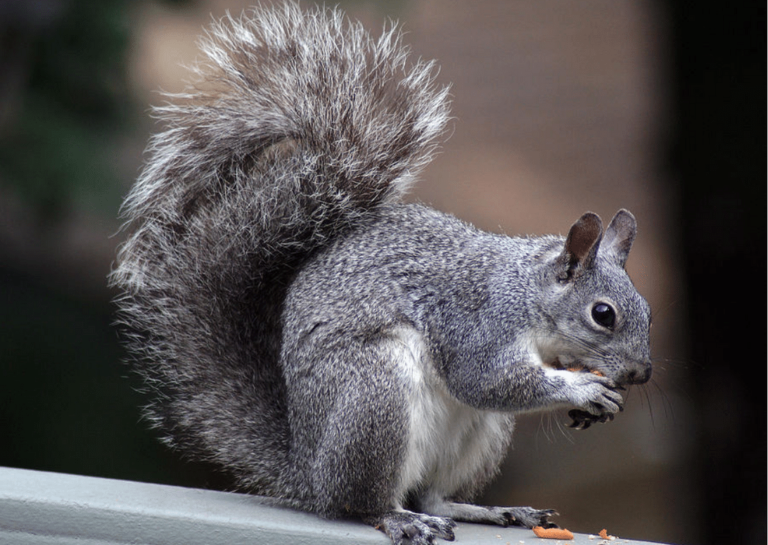Welcome to the Rocky Mountains of Colorado, home to the delightful Colorado Chipmunk. This medium to large chipmunk species, scientifically known as Tamias quadrivittatus, is a fascinating part of the rich wildlife that inhabits this beautiful region. With its distinctive black dorsal stripe and reddish-brown lateral stripes, the Colorado Chipmunk is easily recognizable and a joy to observe in its natural habitat.
Colorado chipmunks are most commonly found in rocky, broken terrain in open woodlands and shrublands. From pinyon-juniper woodlands at lower elevations to montane forests at higher elevations, these chipmunks have adapted to thrive in diverse environments. Their behavior is also captivating, as they are solitary rodents with a knack for foraging for food in the early morning and late afternoon.
Colorado chipmunks have a varied diet, primarily feeding on seeds, berries, flowers, and other plant material. They may also consume insects and carrion if available. Breeding occurs in the spring, when females give birth to 5 to 8 naked baby chipmunks. As seed dispersers, these chipmunks play a vital ecological role in the Rocky Mountains.
If you’re a wildlife enthusiast, exploring Colorado’s chipmunk habitat can be a rewarding experience. Whether you encounter these charming creatures in national parks or other natural areas, observing their behavior and learning about their habits can be both educational and enjoyable. Join us on a journey to discover more about the Colorado Chipmunk and its role in the biodiversity of this remarkable region.
Key Takeaways:
- The Colorado Chipmunk, Tamias quadrivittatus, is a medium to large chipmunk species found in the Rocky Mountains of Colorado.
- Colorado chipmunks are solitary rodents that primarily feed on seeds, berries, flowers, and other plant material.
- They inhabit rocky, broken terrain in open woodlands and shrublands, ranging from pinyon-juniper woodlands to montane forests.
- These chipmunks play an important ecological role as seed dispersers, contributing to the survival and growth of tree seedlings.
- Observing chipmunks in their natural habitat can be a rewarding experience for wildlife enthusiasts exploring Colorado.
Colorado Chipmunk Description
The Colorado Chipmunk, scientifically known as Tamias quadrivittatus, is a medium to large chipmunk species found in the Rocky Mountains of Colorado. This charming chipmunk species is easily identifiable by its distinct black central dorsal stripe and reddish-brown dark lateral stripes. The white lateral stripes are also usually well defined, further contributing to its unique appearance.
The Colorado Chipmunk has specific physical characteristics that set it apart from other chipmunk species. It has a total length ranging from 200-245 mm, with a tail length of 90-110 mm. The hindfoot length measures between 31-37 mm, while the ear length ranges from 20-23 mm. In terms of weight, Colorado chipmunks typically weigh between 45-90 g.
The ventral color of the Colorado Chipmunk is pale gray, providing contrast to its recently molted bright reddish-brown pelage along the back. This reddish-brown color pales to orange-buff on the chipmunk’s sides. These distinctive physical features make the Colorado Chipmunk an interesting species to observe and appreciate in its natural habitat.
| Physical Characteristics | Measurements |
|---|---|
| Total Length | 200-245 mm |
| Tail Length | 90-110 mm |
| Hindfoot Length | 31-37 mm |
| Ear Length | 20-23 mm |
| Weight | 45-90 g |
Differentiating Colorado Chipmunks from Similar Species

While the Colorado Chipmunk and Uinta Chipmunk may appear similar at first glance, there are key features that set them apart. These distinguishing characteristics can help differentiate between the two species.
Distinguishing Features:
- Coloration:
- Colorado Chipmunk: Predominantly black dorsal stripes.
- Uinta Chipmunk: Brownish stripes.
- Lower Pale Stripe:
- Colorado Chipmunk: Has a small dark stripe present under the lowest pale stripe.
- Uinta Chipmunk: Does not have a dark stripe under the lowest pale stripe.
- Ear Markings:
- Colorado Chipmunk: No distinctive ear markings.
- Uinta Chipmunk: Sometimes has distinctive white dots on the ears.
Location:
The location within Colorado can also provide clues when differentiating between these two chipmunk species. Uinta Chipmunks are typically found at higher elevations above 7,000 feet, while Colorado Chipmunks remain in lower elevations.
To visually depict the distinguishing features of the Colorado Chipmunk and Uinta Chipmunk, refer to the table below:
| Feature | Colorado Chipmunk | Uinta Chipmunk |
|---|---|---|
| Coloration | Predominantly black dorsal stripes | Brownish stripes |
| Lower Pale Stripe | Small dark stripe present | No dark stripe |
| Ear Markings | No distinctive markings | Sometimes has white dots on ears |
By closely examining these distinguishing features and considering the location in Colorado, you can accurately identify whether you’re observing a Colorado Chipmunk or a Uinta Chipmunk during your wildlife encounters.
Colorado Chipmunk Range and Habitat
The Colorado Chipmunk, also known as Tamias quadrivittatus, can be found primarily in southern Colorado, occupying a diverse range of elevations. These chipmunks can be spotted at heights of up to 10,500 feet, making the Rocky Mountains their home. Their range extends to the Front Range, where they are most commonly found in the foothills below the 7,000-foot contour.
When it comes to habitat, the Colorado Chipmunk thrives in rocky, broken terrain within open woodlands and shrublands. They are often found scurrying about in pinyon-juniper woodlands at lower elevations and montane forests at higher elevations. They have a particular preference for areas with rocky outcrops, canyons, and foothills, offering them ample opportunities to explore and forage for food.
Behavior and Reproduction of Colorado Chipmunks

Colorado chipmunks are fascinating creatures with unique behavioral patterns and reproductive strategies. Understanding their behavior and reproductive cycle provides insights into their survival and contributes to our appreciation of their role in the ecosystem.
Colorado chipmunks are solitary rodents that occupy small territories and are active during the day. They exhibit territorial behavior, defending their space against intruders. Foraging mostly in the early morning and late afternoon, they search for food, including seeds, berries, flowers, insects, and carrion. Communication among chipmunks is primarily achieved through vocalizations and tail swaying, serving as social signals within their social network.
Fascinatingly, Colorado chipmunks follow a specific breeding pattern. In the spring, males and females emerge from their burrows to mate. During this time, females are only receptive for a few days, ensuring successful mating and increasing the chances of successful reproduction.
After a month-long gestation period, females give birth to 5 to 8 naked baby chipmunks, known as kits. These tiny chipmunks remain in their dens for about 25 days until they are three-quarters the size of an adult. At this point, they venture out into the world, exploring their surroundings. Over the next 40 to 50 days, the young chipmunks gradually wean from their mothers and become more independent.
This reproductive strategy ensures the survival and growth of the Colorado chipmunk population, contributing to the biodiversity of their habitat. By understanding their behavior and reproduction, we can gain a deeper appreciation for these fascinating creatures and the important roles they play in maintaining the balance of the ecosystem.
Key Points:
- Colorado chipmunks are solitary rodents and form small territories.
- They exhibit territorial behavior, foraging in the early morning and late afternoon.
- Communication is achieved through vocalizations and tail swaying.
- Breeding occurs in the spring, with females receptive for only a few days.
- Females give birth to 5 to 8 naked baby chipmunks after a month.
- The kits emerge from their dens in about 25 days and are weaned in 40 to 50 days.
Colorado Chipmunk Diet
The Colorado Chipmunk is an herbivorous species with a diverse diet that primarily consists of seeds, berries, flowers, and other plant materials. They have specific food preferences depending on their location and elevation.
In lower elevations, Colorado chipmunks consume juniper “berries” and prickly-pear as their main food sources. These resilient creatures can navigate through rocky terrains and forage for various plant resources. They are known to feed on mountain mahogany, currants, wild cherry, and snowberry, contributing to the dispersal of seeds and maintaining the ecosystem’s biodiversity.
Additionally, Colorado chipmunks are opportunistic feeders. They may also consume insects and carrion when available, enhancing their nutritional intake. This adaptive behavior allows them to survive and thrive in their habitat.
Colorado chipmunks are meticulous in storing their food for future consumption. They create food caches, strategically burying their finds to ensure a steady food supply. These small mammals depend on free water sources for hydration.
Colorado Chipmunk Diet Overview:
| Food Sources | Primary Diet | Additional Diet |
|---|---|---|
| Seeds | ✓ | |
| Berries | ✓ | |
| Flowers | ✓ | |
| Juniper “berries” | ✓ | |
| Prickly-pear | ✓ | |
| Mountain mahogany | ✓ | |
| Currants | ✓ | |
| Wild cherry | ✓ | |
| Snowberry | ✓ | |
| Insects | ✓ | |
| Carrion | ✓ |
Conservation Status and Ecological Importance
The Colorado Chipmunk, specifically the Tamias quadrivittatus species, currently holds no conservation status according to organizations like CITES or IUCN. However, chipmunks, including the Colorado Chipmunk, play a vital ecological role as seed dispersers. Their foraging habits help disperse seeds and fungal spores, contributing significantly to the survival and growth of tree seedlings in their habitats. Despite not having direct economic importance, the Colorado Chipmunk’s presence in ecosystems is crucial for maintaining biodiversity.
Conclusion
Chipmunks, including the Colorado Chipmunk, are captivating creatures that inhabit the stunning Rocky Mountains of Colorado. With their unique behaviors and diverse habitats, these chipmunks play a crucial ecological role as seed dispersers. For wildlife enthusiasts, spotting and observing chipmunks in national parks and other natural areas can be a thrilling experience.
By appreciating the beauty and diversity of chipmunk species, we can cultivate a deeper understanding of the importance of biodiversity conservation. It is our responsibility to protect these natural habitats and safeguard the future of these remarkable creatures. Through wildlife watching and engaging in conservation efforts, we can contribute to the preservation of the Colorado Chipmunk and other wildlife species that rely on these fragile ecosystems.
Let us be inspired by the wonders of wildlife and join hands to conserve our natural world. Together, we can ensure that future generations will have the opportunity to enjoy the beauty of chipmunks and the rich biodiversity that the Rocky Mountains and Colorado have to offer.
Frequently Asked Questions
What is the scientific name of the Colorado Chipmunk?
The scientific name of the Colorado Chipmunk is Tamias quadrivittatus.
How can I differentiate the Colorado Chipmunk from similar species like the Uinta Chipmunk?
Colorado Chipmunks have predominantly black dorsal stripes, while Uinta Chipmunks have brownish stripes. Additionally, Colorado Chipmunks have a small dark stripe under the lowest pale stripe, which is not present in Uinta Chipmunks.
Where can I find Colorado Chipmunks and what is their habitat preference?
Colorado Chipmunks are primarily found in the Rocky Mountains of Colorado. They inhabit rocky, broken terrain in open woodlands and shrublands, such as pinyon-juniper woodlands at lower elevations and montane forests at higher elevations.
What are the behaviors and breeding habits of Colorado Chipmunks?
Colorado Chipmunks are solitary rodents that forage for food in the early morning and late afternoon. Breeding occurs in the spring, with females giving birth to 5 to 8 naked baby chipmunks after a month of gestation.
What do Colorado Chipmunks eat?
Colorado Chipmunks primarily feed on seeds, berries, flowers, and other plant materials. They may also consume insects and carrion if available.
What is the conservation status of the Colorado Chipmunk?
The Colorado Chipmunk is not currently listed under any conservation status. However, chipmunks, including the Colorado Chipmunk, play an important ecological role as seed dispersers.
Where can I spot and observe Colorado Chipmunks in the wild?
Colorado Chipmunks can be found in national parks and other natural areas in the Rocky Mountains of Colorado. Their charming behavior and unique appearance make them a delight to observe.







